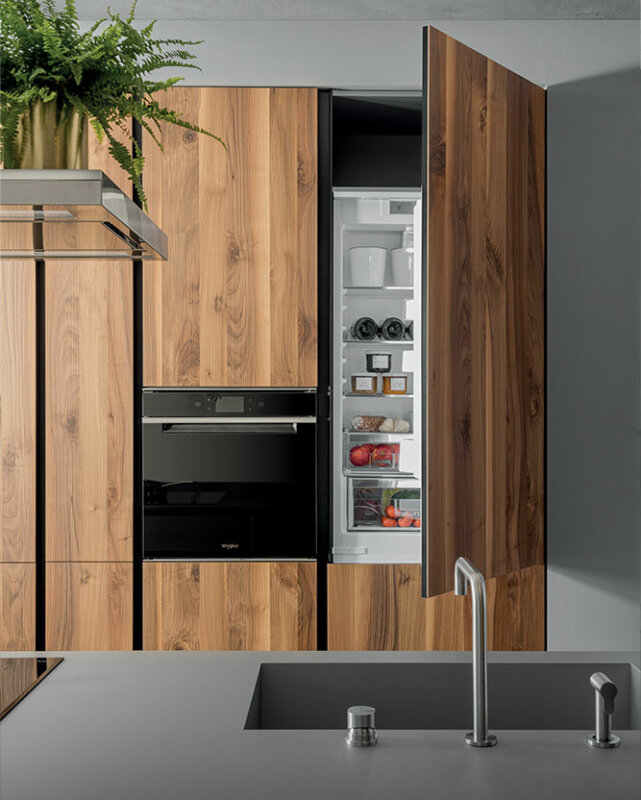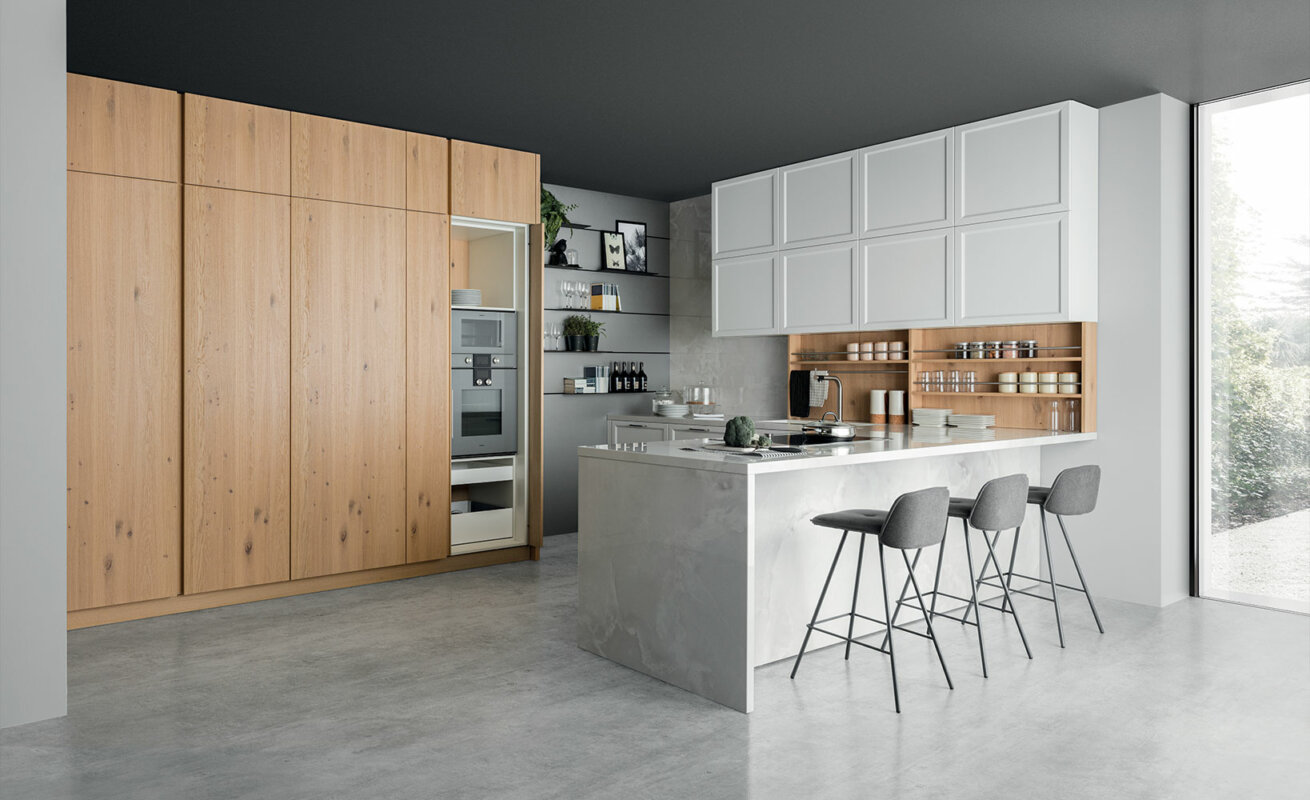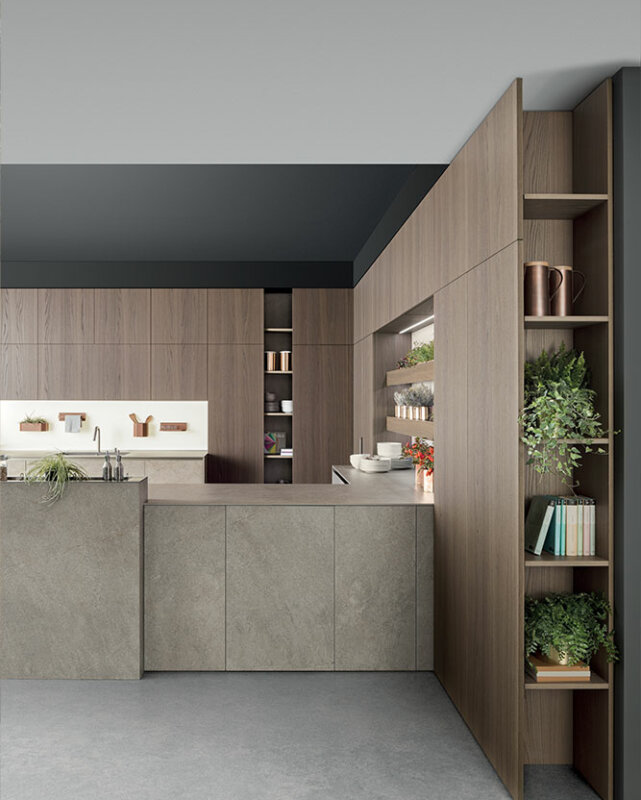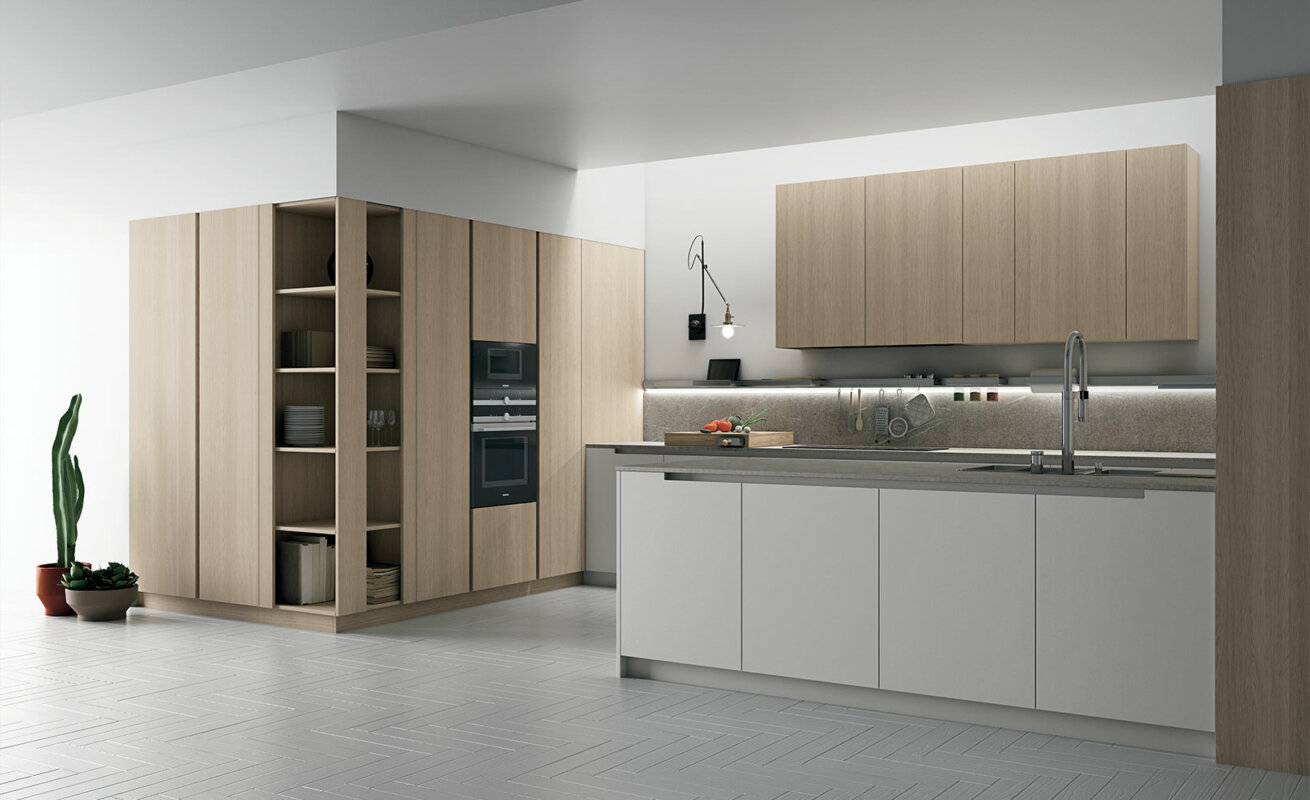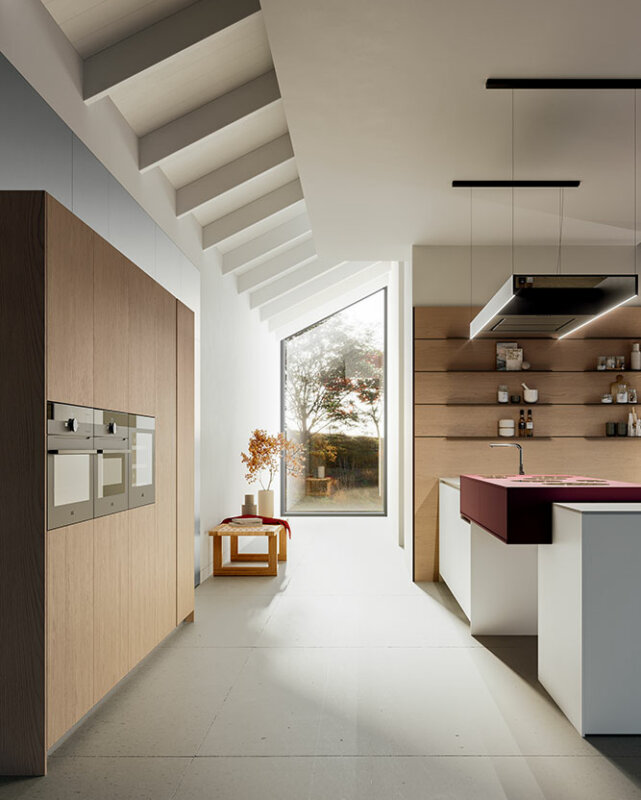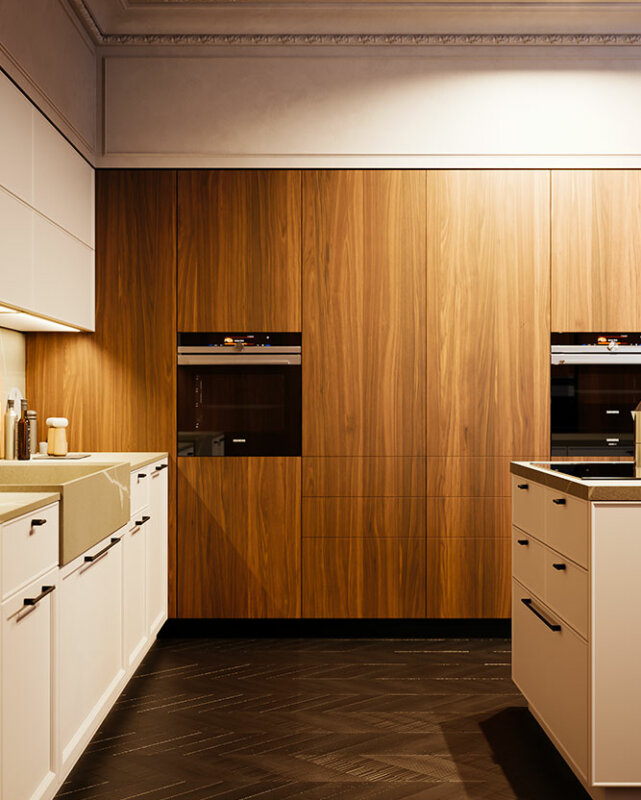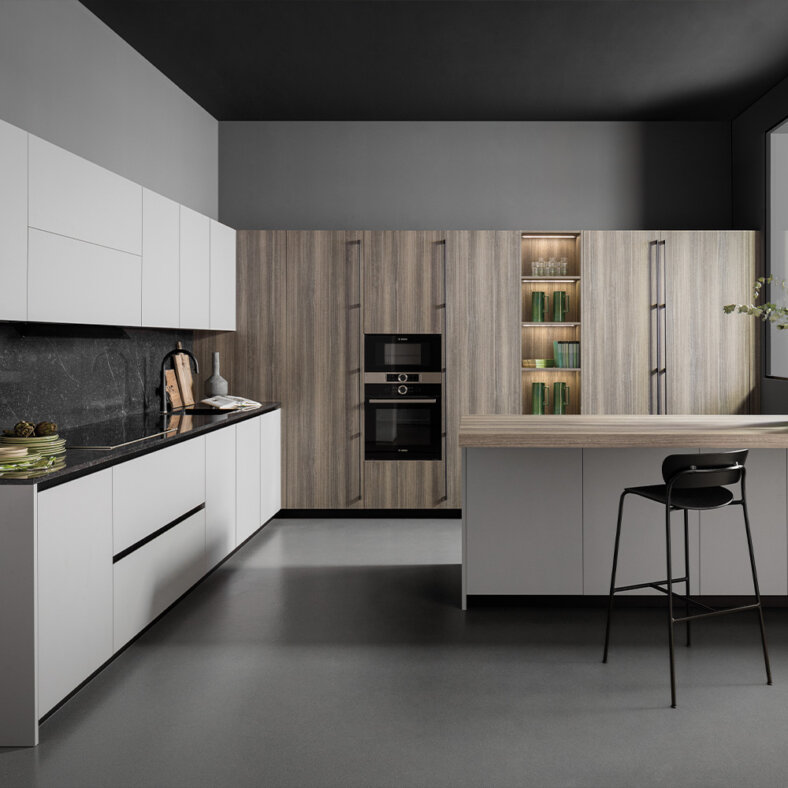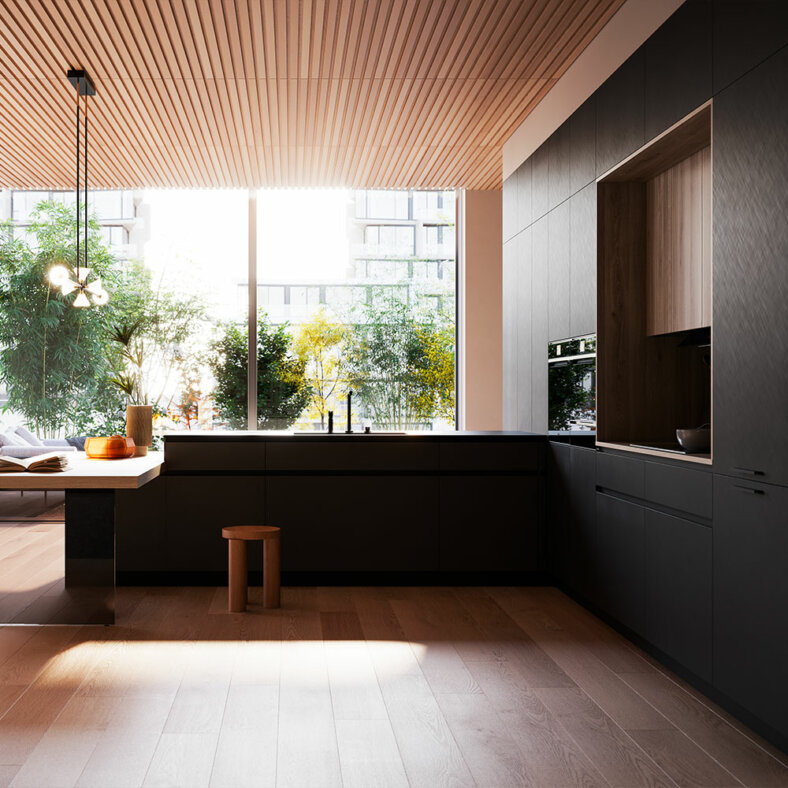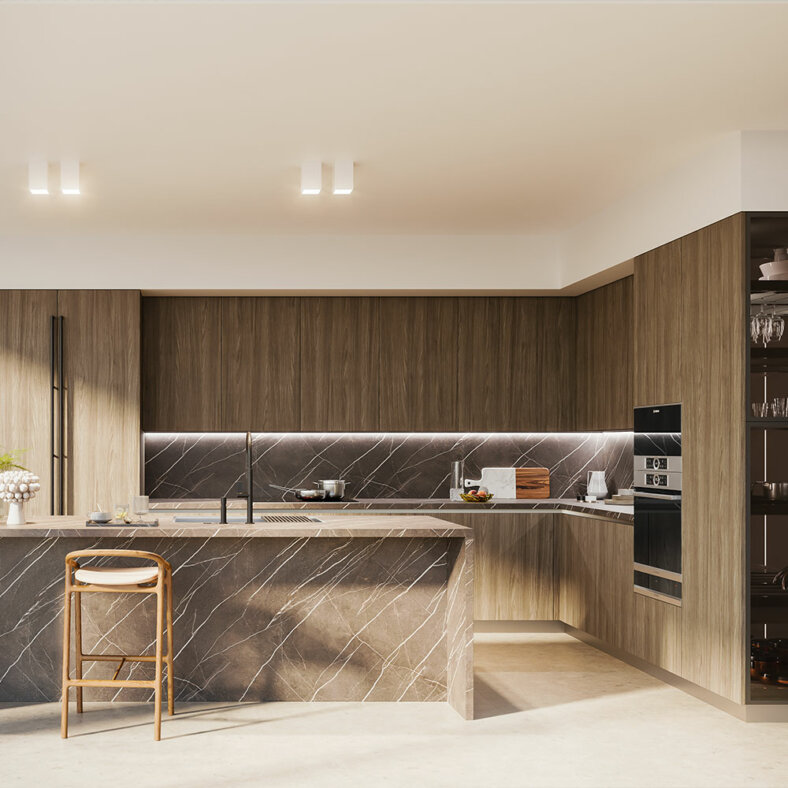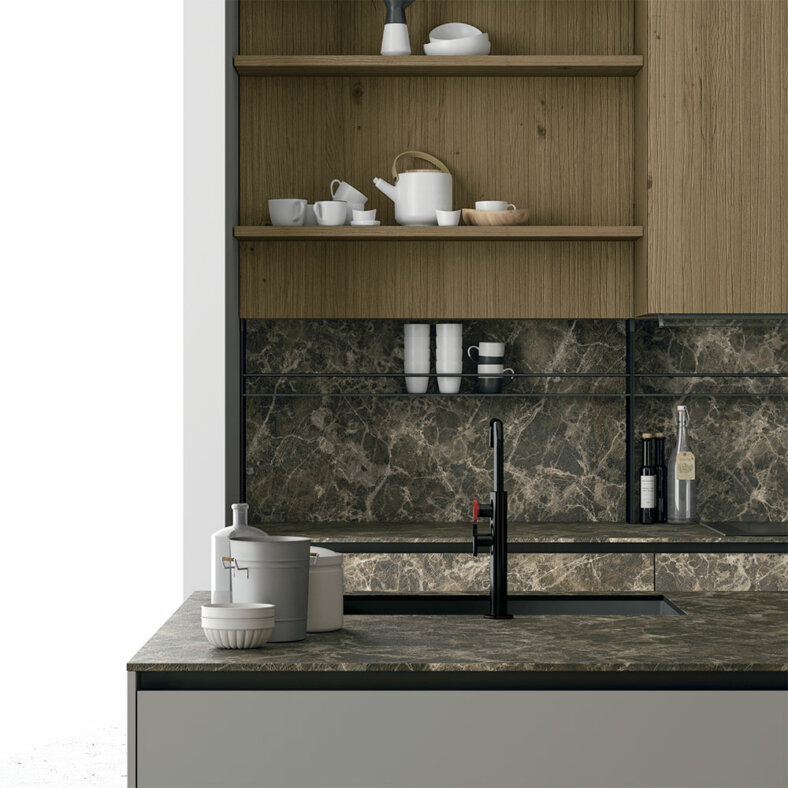Suggestions and guides
Wood
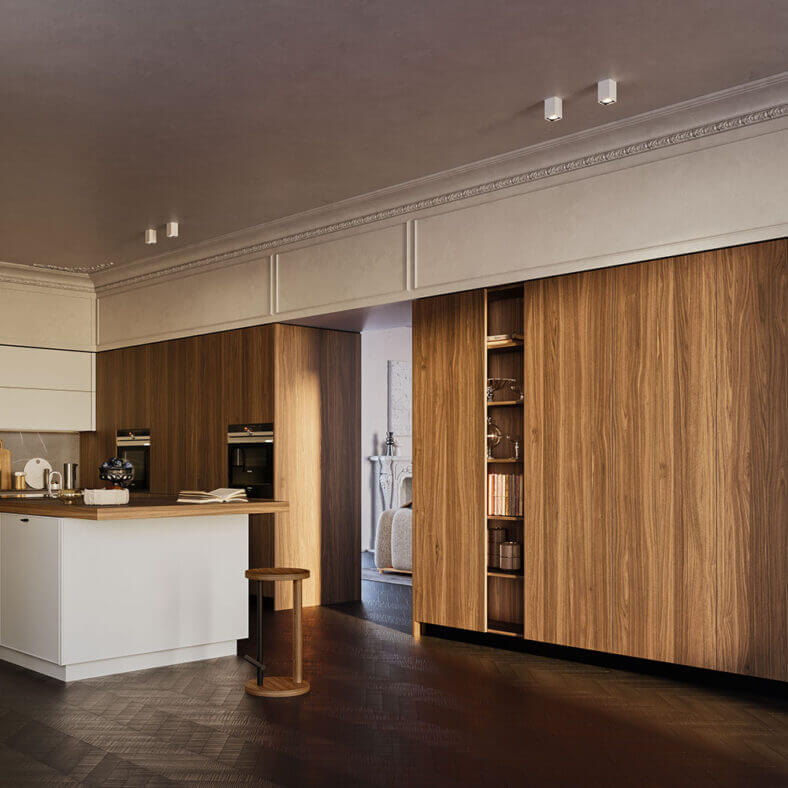
A timeless classic
Solid wood is generally used only for small details, while the majority of elements are constructed in lighter wood veneer panels, making it possible to introduce a wide variety of wood species.
Wood veneer panels: how they are made
The majority of wood kitchens are constructed from wood veneer panels, in other words unfinished panels with a glued “veneer” finish. These thin sheets of real wood can be stained with acrylic paints or lacquered with polyurethane paint.
Wood veneer panels are lighter than solid wood, easier for the hinges to support and do not deform like real wood.
Wood kitchens with special treatments
Already sophisticated wood kitchens become even more elegant thanks to the different treatments available today. Examples include:
- lacquered finishes that bring a lasting shine to cabinet fronts
- open-pore paint finishes that further exalt wood veining
- thermo-treatment, an ecological way to create drier and more durable finishes and more natural looking darker colours; this process involves baking wood finishes at a temperature between 180 and 230°C while they are protected with water vapour
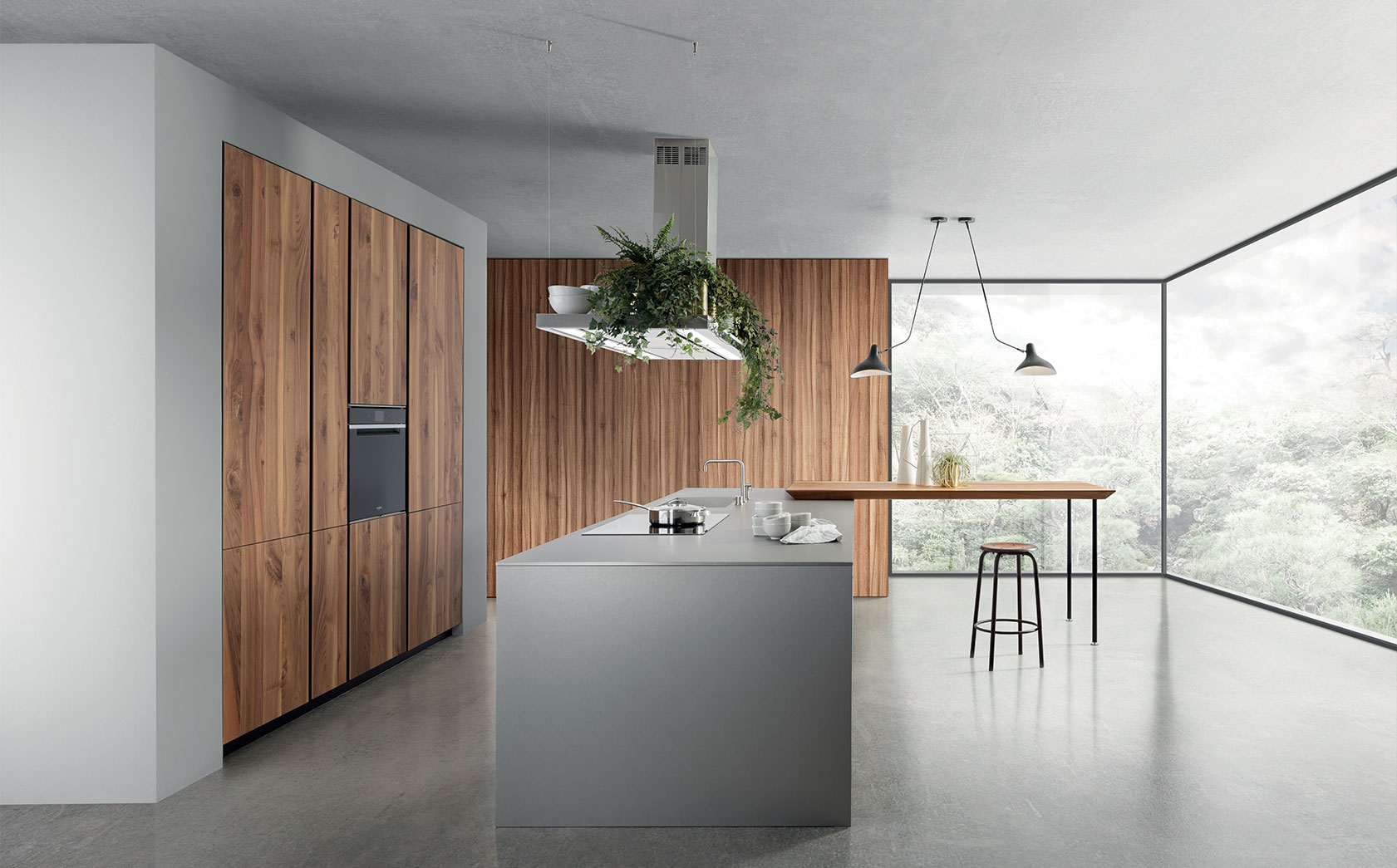
Characteristics and advantages of wood kitchens
Wood is:
- alive which means it changes over time, in particular its colour, one of the most appreciated characteristics of this living and aesthetically fascinating material
- renewable because it is selected from plantations where it is cultivated and substituted
- timeless because the elegance of wood remains a recognised value.
Wood kitchen panels
Wood is used in kitchens for cabinet fronts. They are generally constructed from particle board panels finished with a sheet of wood veneer protected by a suitable paint finish. A vast variety of woods offers the possibility to choose between very different styles and create kitchen environments that may be Nordic, elegant, warm and traditional, original and sophisticated, reflecting trends and personal tastes.
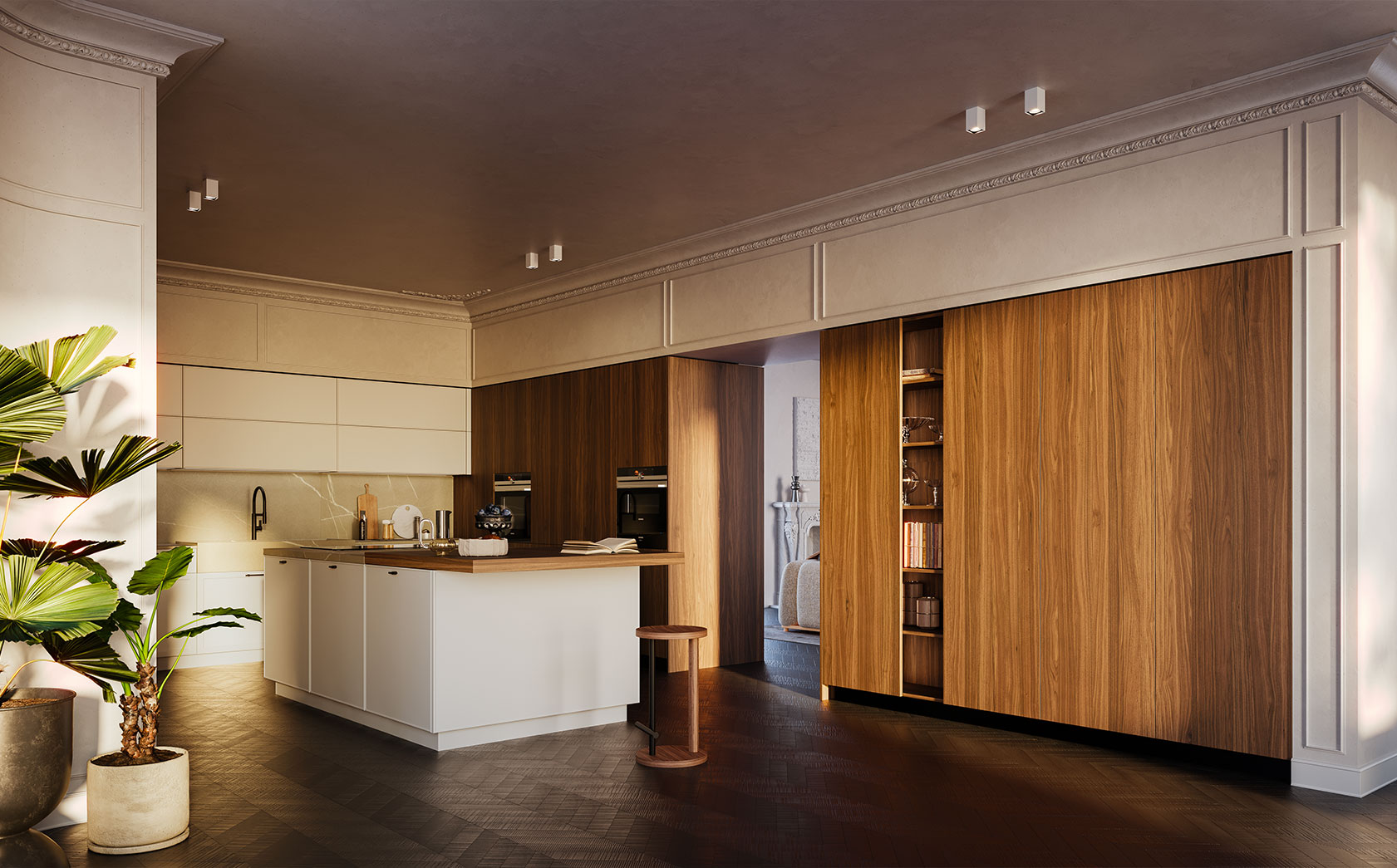
Solid wood kitchen elements
Solid wood is used for small details in the kitchen, such as shelves or table legs, or often for the edges of framed fronts. This is a question of cost, weight and the vitality of wood, which continues to change over time, and because the hardness of some woods makes them difficult to cut and work. For this reasons, solid wood kitchens are available only in particular species and for the most part hand-crafted.
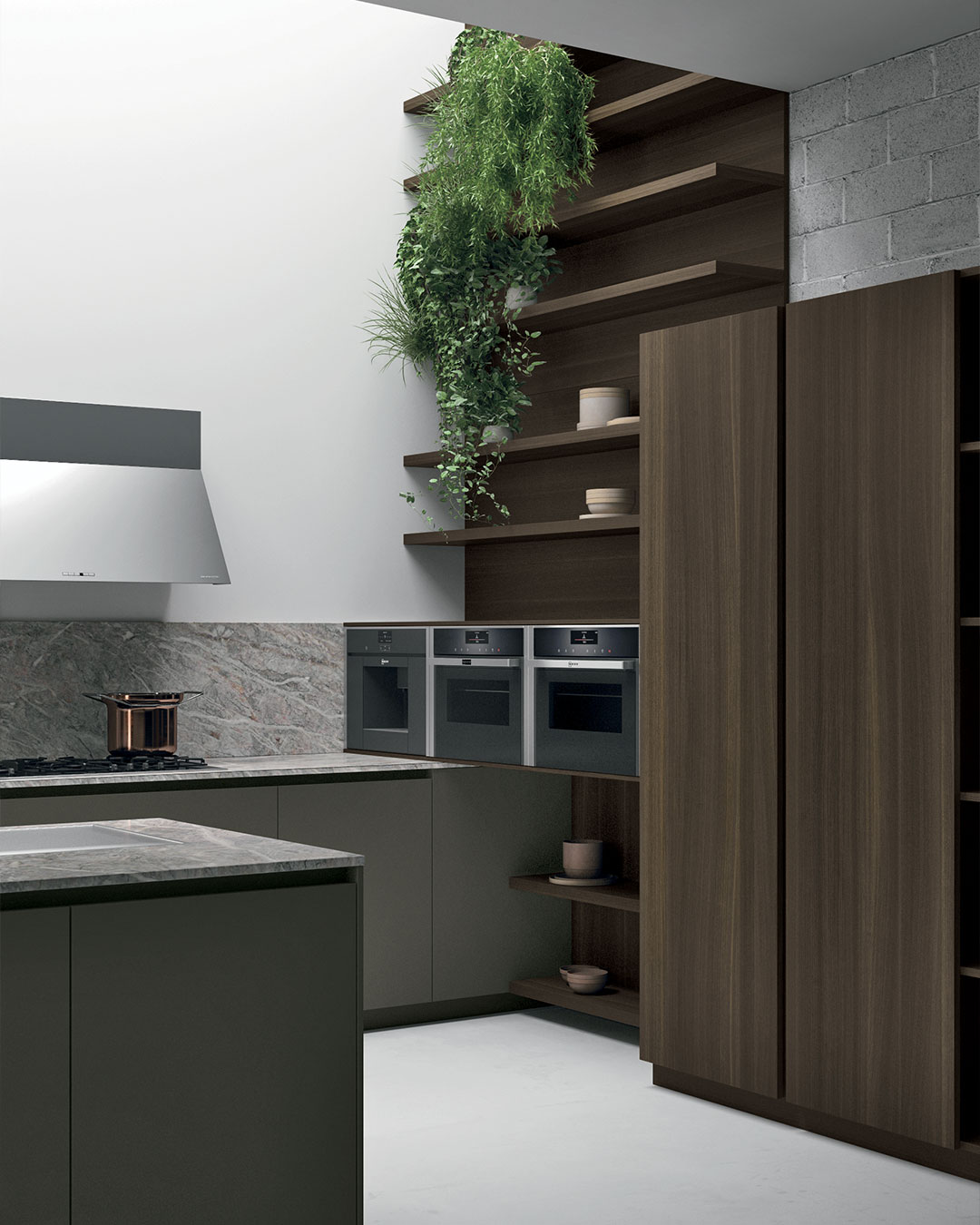
How to clean a wood kitchen
Wood surfaces in the kitchen should be cleaned with a soft damp cloth. Remove stains as quickly as possible; for more persistent stains use a soft cloth and specific wood cleaning products; always pass the cloth in the direction of the veining.
Avoid the use of:
- pH basic detergents, above all those containing ammonia
- vapour jets or similar
- solvents, such as acetone or alcohol, which can attack the paints protecting the wood
